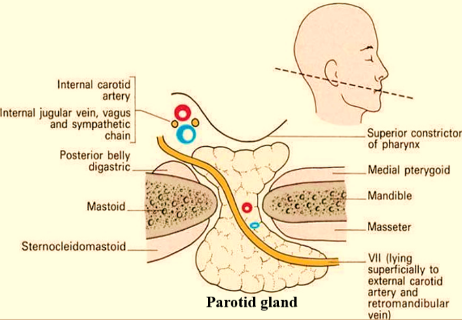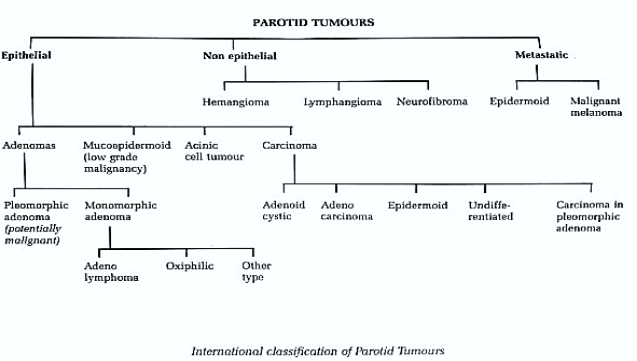


a) Pleomorphic:
➣ Any age, no gender predilection.
➣ 75% of all parotid tumors.
➣ Over 60 years of age.
b) Warthin’s tumor:
➣ Over 60 years.
➣ Male to female ratio is 4:1.
➣ Consists 15% of all parotid tumors.
2.Carcinomas
a) Acinic cell Carcinoma: Low grade malignancy.
b) Adenoid Cystic carcinoma: Commonly seen in USA. Invariably fatal due to perineural spread and pulmonary metastasis.
c) Adenocarcinoma and Squamous Cell Carcinoma: Both have poor prognosis. Very rare. ( 25% have 5-year survival)
3. Non epithelial:
a) Hemangioma.
b) Lymphangioma.
c) Neurofibroma.
d) Neurilemma.
Mostly infants affected. Frequent spontaneous regression of any gland affected in this group.
4. Malignant lymphoma.
5. Unclassified tumour.

Right Parotid tumour.
